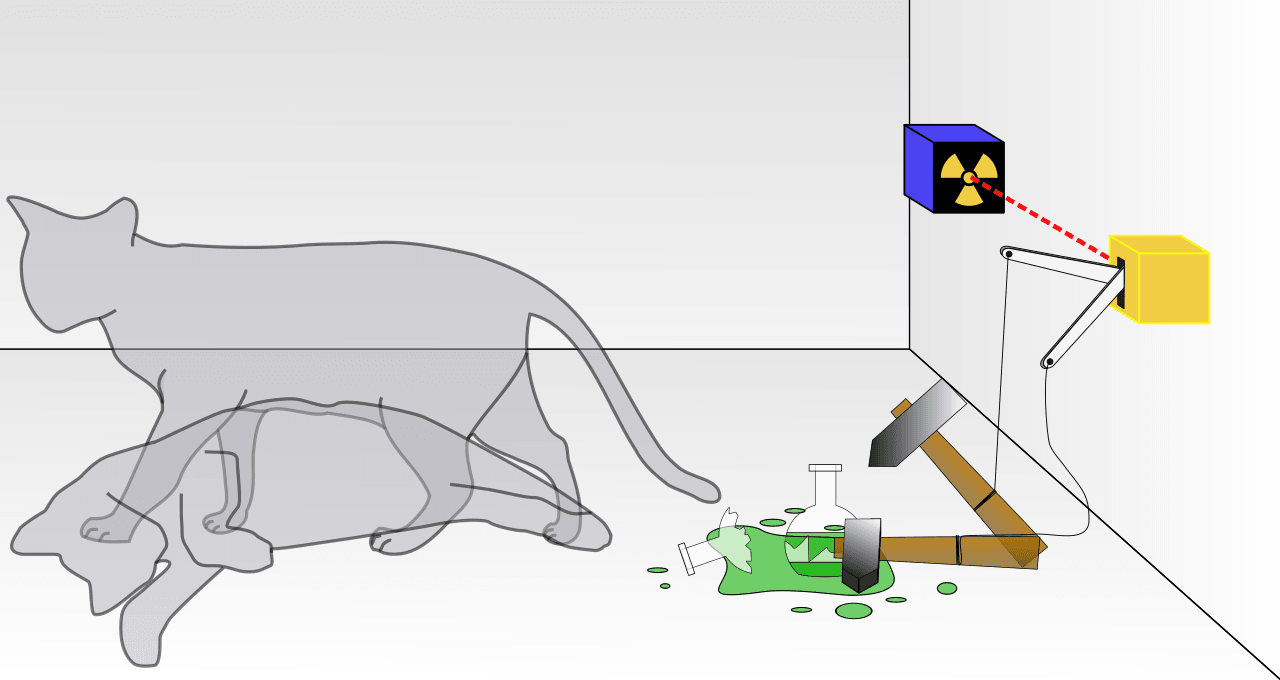A new breakthrough in physics allowed researchers to predict the jumps of Schrodinger’s cat. Schrodinger’s cat has been a symbol of quantum superposition and unpredictability for a long time, and it has been extremely challenging to determine its jump in real time, saving it from doom.
Yale researchers managed to prepare an early warning system which can help predict the imminent jumps of artificial atoms equipped with quantum information. The study describing their findings was published in the journal Nature.
Schrodinger’s cat is one of the most popular paradoxes in quantum physics and is often used to demonstrate superposition, which is two opposite states existing simultaneously and unpredictably in quantum physics. Scientists refer to a cat in a sealed box with a radioactive substance and poison which will be triggered if an atom decays. The superposition theory suggests that until the box is opened, the cat is both alive and dead. If someone opens the box, the cat’s quantum state will change, making it either dead or alive.
Yale professor Michael Devoret and lead author Zlatko Minev conducted experiments to help predict the jump of Schrodinger’s cat. The results of the experiments contradict the views of famous Danish physicist Niel Bohr, who proposed that the jumps are neither abrupt nor as random as was thought previously.
Electrons, molecules and artificial atoms are extremely tiny, and they contain a portion of quantum information known as a qubit. For such objects, quantum jumps are a sudden transition from one energy state to another. This is well-displayed in disciplines such as quantum computing, in which researchers deal with jumps of the qubits, which show errors in calculations.
While Bohr proposed his idea on these experiments almost one century ago, actual experiments weren’t observed or conducted until the 1980s when researchers observed atoms.
“These jumps occur every time we measure a qubit,” said Devoret, the F.W. Beinecke Professor of Applied Physics and Physics at Yale and member of the Yale Quantum Institute, in a statement. “Quantum jumps are known to be unpredictable in the long run.”
“Despite that,” Minev added, “We wanted to know if it would be possible to get an advance warning signal that a jump is about to occur imminently.”
To predict the jumps of Schrodinger’s cat, the Yale team used a new approach which indirectly monitors a superconducting artificial atom using three microwave generators which interact with the atom in a 3D cavity of aluminum. This approach, which was developed by Minev for the purpose of superconducting circuits, helps researchers observe atoms with high accuracy and efficiency.
“The beautiful effect displayed by this experiment is the increase of coherence during the jump, despite its observation,” Devoret said.
“You can leverage this to not only catch the jump, but also reverse it,” Minev said.





